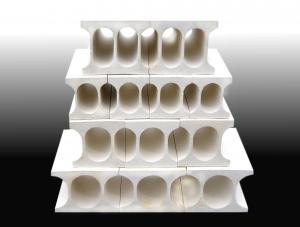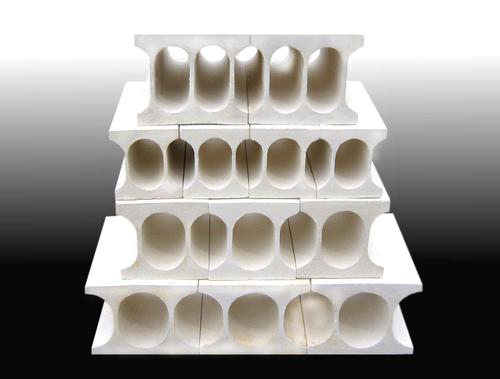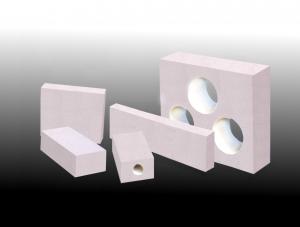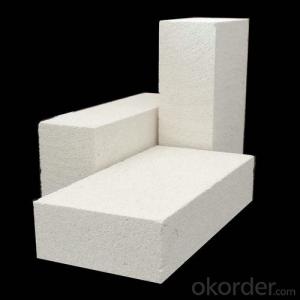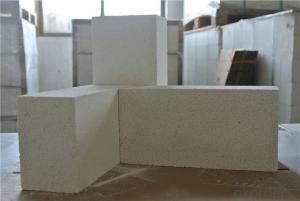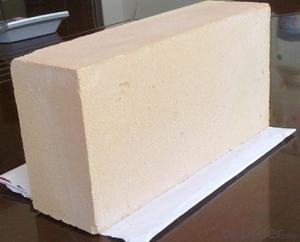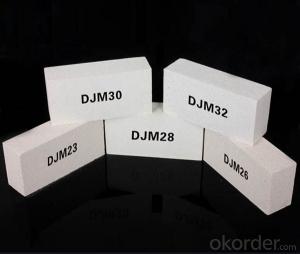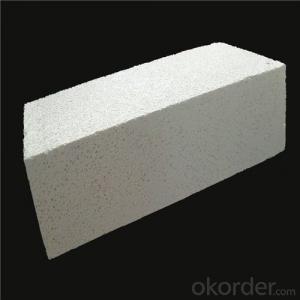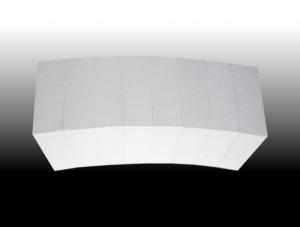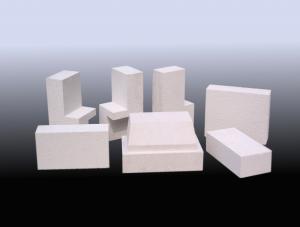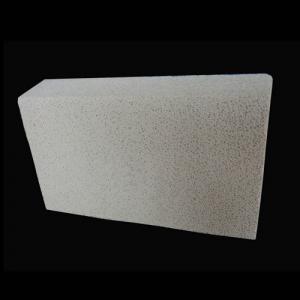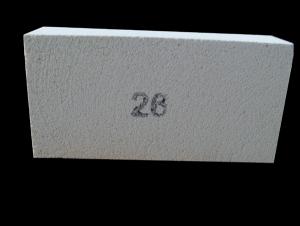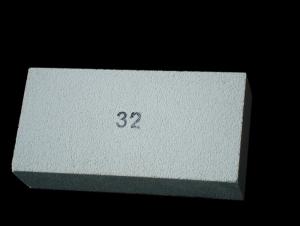Insulating Fire Brick GJM23 - High-Quality Insulation for Fire Safety
- Loading Port:
- China Main Port
- Payment Terms:
- TT OR LC
- Min Order Qty:
- -
- Supply Capability:
- -
OKorder Service Pledge
Quality Product, Order Online Tracking, Timely Delivery
OKorder Financial Service
Credit Rating, Credit Services, Credit Purchasing
You Might Also Like
General Information
CMAX insulating firebricks are classified under temperature between 1300℃ to 1700℃, manufactured from high purity alumina clay.
Feature
Light weight and low thermal conductivity
Low heat storage
Low iron and impurities
High thermal shock resistance
Application
CMAX insulating firebricks can be used as a hot face lining directly exposed to the heat or as a backup insulation layer in iron and steel mills, non-ferrous foundries, petrochemical, ceramic, glass.
- Q: Can insulating fire bricks be used in tundish linings?
- Insulating fire bricks can indeed be utilized in tundish linings. Comprised of lightweight refractory materials, these bricks boast exceptional insulation properties. Given that tundish linings are typically subjected to elevated temperatures and thermal shocks, which can prompt swift deterioration, incorporating insulating fire bricks can effectively shield the tundish lining from excessive heat and thermal stresses. These bricks exhibit low thermal conductivity, thereby minimizing heat loss and maintaining a constant temperature within the tundish. Moreover, insulating fire bricks possess commendable mechanical strength, rendering them capable of enduring the mechanical stresses commonly encountered during tundish operations. In essence, the utilization of insulating fire bricks in tundish linings can enhance thermal efficiency, curtail energy consumption, and prolong the tundish's lifespan.
- Q: Do insulating fire bricks have low thermal conductivity?
- Yes, insulating fire bricks have low thermal conductivity. These bricks are specifically designed to minimize heat loss and provide excellent insulation properties. The low thermal conductivity of insulating fire bricks is due to their composition, which typically includes lightweight materials such as clay, silica, and alumina. These materials have low thermal conductivity, meaning they are not efficient at transferring heat. As a result, insulating fire bricks are highly effective at reducing heat transfer and maintaining high temperatures within a structure. This makes them ideal for applications that require insulation against high temperatures, such as in kilns, furnaces, and fireplaces.
- Q: Are insulating fire bricks resistant to sound transmission?
- Yes, insulating fire bricks are known to have good sound insulation properties and are resistant to sound transmission.
- Q: Can insulating fire bricks be used for insulation in power boiler walls?
- Yes, insulating fire bricks can be used for insulation in power boiler walls. Insulating fire bricks are designed to provide excellent thermal insulation, high temperature resistance, and low thermal conductivity. These properties make them suitable for use in power boiler walls, where insulation is crucial to reduce heat loss and improve energy efficiency.
- Q: What are the main components of insulating fire bricks?
- Insulating fire bricks usually consist of a blend of alumina, silica, and assorted lightweight additives. Alumina (Al2O3) is crucial in insulating fire bricks due to its ability to withstand high temperatures and resist thermal shock. Silica (SiO2) contributes to improving the refractory qualities and insulation abilities of the bricks. Furthermore, vermiculite or perlite, which are lightweight additives, are commonly incorporated to enhance the insulating properties of the bricks. The collaboration of these components produces a material that possesses exceptional thermal insulation, minimal thermal conductivity, and remarkable heat resistance.
- Q: What kind of material is clay insulation refractory brick made of?
- Alumina silicate refractories with a content of 30% ~ 46% are called clayey refractories. Clay products are mainly made of mullite, glass phase, square quartz and quartz.
- Q: Are insulating fire bricks resistant to thermal conductivity?
- Yes, insulating fire bricks are designed to be resistant to thermal conductivity. These bricks are made from materials with low thermal conductivity, such as lightweight refractory fibers or insulating materials like vermiculite or perlite. The purpose of insulating fire bricks is to provide thermal insulation and prevent heat transfer, making them ideal for applications where temperature control is important, such as in kilns, furnaces, or fireplaces. By reducing thermal conductivity, insulating fire bricks help to retain heat within the desired area and minimize energy loss, making them an effective choice for insulation in high-temperature environments.
- Q: Do insulating fire bricks have a low thermal conductivity?
- Insulating fire bricks possess a low thermal conductivity, rendering them ideal for applications necessitating thermal insulation. These bricks are specially crafted to minimize heat transfer. In comparison to traditional fire bricks, insulating fire bricks exhibit lower density and higher porosity, thus aiding in diminishing heat flow through conduction. With their low thermal conductivity, these bricks function as efficient barriers against heat transfer, ensuring cooler surrounding regions and heightened energy efficiency.
- Q: What is the typical lifespan of an insulating fire brick?
- The typical lifespan of an insulating fire brick can vary depending on several factors. These factors include the type and quality of the brick, the temperature and conditions it is exposed to, and the level of maintenance it receives. In general, insulating fire bricks are designed to withstand high temperatures and provide insulation in various industrial applications such as kilns, furnaces, and fireplaces. They are made from lightweight refractory materials that have good thermal insulation properties. With proper installation and regular maintenance, insulating fire bricks can last for many years. However, over time, exposure to extreme temperatures, thermal cycling, chemical corrosion, and mechanical stress can cause gradual wear and tear, leading to a decrease in their lifespan. On average, insulating fire bricks can typically last anywhere from 5 to 20 years. This range is quite broad due to the aforementioned factors. Bricks used in higher temperature applications or subjected to more severe conditions may have a shorter lifespan, while those in less demanding environments may last longer. To maximize the lifespan of insulating fire bricks, it is important to follow proper installation techniques, use bricks with the appropriate temperature rating for the application, and regularly inspect and maintain the bricks. This includes checking for cracks, erosion, or any signs of deterioration and promptly addressing any issues to prevent further damage. Overall, while there is no definite lifespan for insulating fire bricks, their longevity can be extended through proper care and maintenance, allowing them to provide effective insulation and serve their intended purpose for a significant period of time.
- Q: Are insulating fire bricks resistant to hydrofluoric acid?
- Hydrofluoric acid is a highly corrosive substance capable of attacking and dissolving various materials, including fire bricks, which lack resistance to it. Therefore, it is crucial to exercise utmost caution and employ suitable protective gear while dealing with this hazardous substance.
Send your message to us
Insulating Fire Brick GJM23 - High-Quality Insulation for Fire Safety
- Loading Port:
- China Main Port
- Payment Terms:
- TT OR LC
- Min Order Qty:
- -
- Supply Capability:
- -
OKorder Service Pledge
Quality Product, Order Online Tracking, Timely Delivery
OKorder Financial Service
Credit Rating, Credit Services, Credit Purchasing
Similar products
Hot products
Hot Searches
Related keywords
